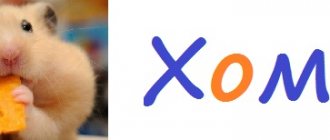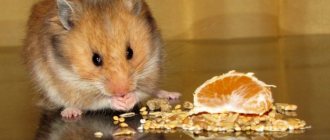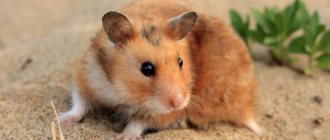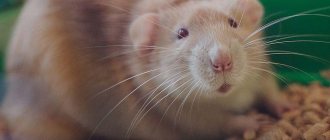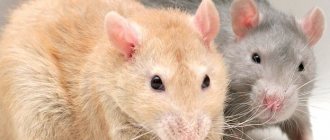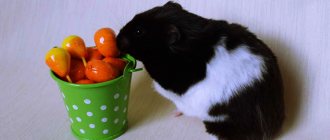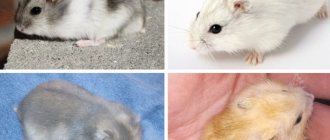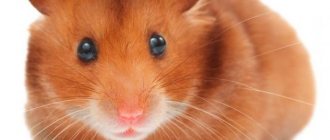A hamster is a cute pet. Its content has many advantages, but many who want to buy this animal are often faced with the choice of which hamster is better to get: Syrian or Djungarian? The fact is that these breeds are the most common in Russian homes. As representatives of the Khomyakov family, they are, of course, similar. But they also have several important differences, which may be decisive for the future owner when choosing a pet.
How do the carriers of these two breed qualities differ from each other, and which hamster is better to buy: Syrian or Djungarian, we will tell you in this article.
First, let's define the description of these two types of ornamental rodents.
Djungarian hamster. Appearance
This is a very miniature animal with a pointed muzzle and small ears. Its body weighs no more than 50 grams with a total length of no more than 10 cm. As a rule, it is covered with thick short fur, which in natural conditions is usually gray-brown in color with white patches. A blackish or dark gray stripe is expressed along the line of the spine - this is a common species characteristic for dzungarians. The belly, paws and inside of the animal's ears are usually white or light. The eyes are bulging and black.
The domestic Djungarian hamster differs in color from the wild one. There is a usual set of colors for domesticated animals: this is standard (gray-brown body with a white belly), sapphire color (bluish-gray, also with a light belly), pearl (whitish with gray splashes) and tangerine (cream with a red tint).
But you need to take into account that individuals of this species molt in winter and become almost white - because of this, and also because of their small size, the dzhungarika is sometimes called the Russian winter dwarf hamster. Nature has provided for the hamster to be invisible in the snow, because dwarfs do not hibernate and in winter conditions must also take care of food. However, it should be noted that in captivity, molting with color change rarely occurs.
How to choose a hamster for a child in order to raise a respectable and punctual person
According to experts in raising children, it is necessary to have a living creature in the apartment. It doesn't have to be a cat or a dog. In order for a child to grow up kind and sympathetic, he must be given this opportunity from childhood. How else can you do this if you don’t buy a pet that will require care? The fact that moms and dads will help with this is absolutely clear. But performing even the smallest or insignificant duty will make the child punctual and responsible. A hamster would make an excellent pet. He won't make a mess like little cats. Will not damage shoes or carpets like dogs. The creatures are small and at first glance lazy. But if you know how to choose a hamster with an active and cheerful disposition, and also which breed will be best for the child, then fun and proper development will be ensured.
Article on the topic: Who is better: a hamster or a rat, differences from a rabbit, chinchilla and parrot
Where does it live in nature?
Many people are interested in where and how the Djungarian (or Sungur) hamster lives in wild natural conditions. This interest is not just caused by curiosity: after all, in order to provide the best living conditions for an animal in captivity, it is important to know what the lifestyle of its wild ancestors was like.
In the Russian expanses, this type of hamster is very common, for example, in Khakassia, in some regions of Kazakhstan, and in the steppes of Southwestern Siberia. For its habitat, this rodent, due to its food preferences, chooses semi-deserts and steppe spaces where cereal herbaceous plants grow.
Djungarian hamsters are most active at night. They live in minks, which necessarily have several entrances and holes, as well as a nesting chamber.
The life expectancy of this rodent in the wild is short - no more than two, sometimes three years. At home, it usually increases, but only slightly.
Correct and consistent
If you have already decided on the breed, then let’s move on to how to choose a hamster for your child. For children, the main thing has always been and remains to choose an active animal. If the pet sleeps constantly, then the baby will lose interest in it. To prevent this from happening, follow the selection rules and problems will not arise:
Before purchasing, let your baby hold and spend as long as possible in front of the cage with all the animals. Sometimes it happens that an allergic reaction occurs. But not on the fur, but on the protein secreted in the urine. You can determine your tendency to allergies by the appearance of a slight runny nose, watery eyes and sneezing. Prolonged contact will result in a rash and irritation of the mucous membranes and skin.
Content Features
Although many owners do not listen to this opinion, Djungarians should not be placed several times in one cage. However, as evidenced by the experience of keeping this species in captivity, it is best if there is only one animal in one cage.
Keeping a male and female together will result in offspring. If the animals are not further planted, their numbers will grow exponentially, and instinct will force the adults to eat their young. Usually this immediately causes understandable rejection among the owners, but here it should be understood that hamsters in their natural environment do not live in families, but in single individuals in each area, and captivity conditions cannot change this. Therefore, if a female hamster has offspring, they should be placed separately upon reaching a certain age (as soon as young hamsters are able to feed on their own).
It is also not recommended to keep two same-sex hamsters together: in this case, aggression towards each other is possible, both in females and males. In addition, living together in the same cage can cause stress in each of the inhabitants, and this will inevitably affect their owners as soon as they try to communicate with them.
It is best to feed Djungarian hamsters in captivity with special food.
It is worth noting that pet stores quite often sell animals of hybrid origin under the guise of a Djungarian hamster. Such individuals may have an unstable psyche and a tendency to various diseases, including diabetes. A conscientious breeder will always provide you with a pedigree upon request.
Now let’s look at materials about another, no less popular human companion animal.
The advantage of buying hamsters and how to do it correctly
Why are hamsters better than cats or dogs? The most important and significant proof of a successful purchase is saving space for storage. Such creatures do not require much space. Just a comfortable spacious cage. The benefits also include:
- minimal care;
- feeding is easy and inexpensive;
- does not require mandatory walking outside;
- There is no additional expenditure on toys and special items for development.
Even if you want to train your pet, you should not invite a trainer. You can do everything yourself. The only thing that will require effort during maintenance is the hygiene of the cage and the animal. But this can also be learned quickly. Therefore, if you want to have a fluffy animal in the house, a hamster is the best option.
Proof of a successful purchase of hamsters - saving space for keeping
What else could be a reason to buy this particular animal? The small rodent is a rather funny creature. He loves to accumulate food behind his cheeks. Hence the funny look and gait. Children really like to watch the behavior of a funny animal. It is also a well-known fact that every child has a special love for individuality: you need to have something that no one else has. This is where tiny friends come in handy. There are no identical colors, which means that all small mammals will be different. What was required was received. The last advantage of such a friend can be considered the small size. Hamsters are called "pocket pets". Little balls will always cheer you up with their antics.
All that remains is to choose the breed. The six-inch Syrian hamster is considered the most common and calm species. It also has other names:
But there are also Chinese, Djungarian, Siberian and Roborovsky hamsters. We will not take into account those individuals that are crossed for hybrids. If you need a larger pet, then this is a Siberian. But the Syrian has a huge advantage over other breeds.
Article on the topic: How to determine the sex of a hamster and distinguish a boy from a girl, males and females of the Dzungarian and Syrian breeds
Syrian hamster. Description
This representative of the Khomyakov family is larger than the Djungarian - together with the tail (1.5 cm), the body length of this rodent is 13 (in rare cases, up to 18) centimeters. In this case, the weight can reach 120-125 grams. Representatives of this species, also called Golden hamsters, are distinguished, respectively, by the golden or brownish color of their thick, soft fur. In the process of domestication and selection, the variability of coat color has expanded significantly: Syrian hamsters can be, in addition to the main colors, black and silver-white, as well as bicolor and even tortoiseshell.
A feature that is assigned to all hamsters in animal science, but is especially noticeable among Syrians, is the presence of cheek pouches. They are designed to transport food that the animal obtains while exploring the surroundings to its burrow. In addition, if there is a lot of food, this hamster also tends to store it in its bags. When full, the sacs sag from the cheeks to the very shoulders of the animal, which is why the name of this hamster is translated from Arabic as “Mr. Saddlebags.”
The remaining features that can be distinguished when comparing the Syrian hamster and the Djungarian hamster are the former’s prominent protruding ears, a slightly more elongated muzzle, and the absence of a dark dorsal stripe.
What kind of hamster should I get?
It all depends on the child's preferences. The age of the children is of considerable importance - you should not buy a small Djungarian hamster for a child of preschool age, because he can easily crush the fragile body of the animal while playing with them. In addition, some especially wild individuals have the habit of biting.
But the larger Syrian hamster can be safely held and stroked. Thanks to this, children like them more. And you don’t have to worry that the child will be bitten - Syrian individuals are completely non-aggressive towards people.
If parents know that their child is not very responsible and they do not have much time to care for a hamster, then they should choose a Djungarian hamster, as he is more independent and will be able to take care of himself, even if the household forgets to clean up or feed him.
Now, knowing all the main differences between the two breeds, you can draw your own conclusion which one will fit best into the family. But before buying, you need to seriously discuss this with your child and explain to him how much responsibility he has.
Coat types
Through the work of breeders, four separate subspecies of Syrian hamsters have been bred. These subspecies are distinguished by the following types of coat. The most common and common is the short-haired type. With such plush-like fur, different colors look best.
Long-haired Syrians have also been bred, another name for which is Angora. Males of this subspecies have a kind of “skirt” of long (8 to 10 cm) hair in the lower part of their body. However, the females look like ordinary Syrians, perhaps a little fluffier. In foreign pet stores, this variety is called “Teddy Bear hamster”.
The Satin or Satin Syrian hamster is distinguished by fur with a special, almost glossy sheen. This effect was achieved by breeding a new variety whose fur contained hollow hairs. However, individuals of Satin Syrians cannot be mated with each other, since this may result in the birth of animals with sparse hair or its complete absence.
Rex (or Curly) hamsters give the impression of being disheveled animals - the hairs in their lush outfit are slightly curled. In addition, rexes also have curled mustaches. This variety can be either short(-) or long-haired.
The last variety is represented by Hairless Syrian hamsters. They are characterized by a complete absence of hair. However, animals with such a fixed mutation sometimes still have a certain velvety appearance and even short “whiskers”.
Unfortunately, representatives of hairless Syrians are quite sickly, they require special care: in unfavorable temperature conditions, some owners even “dress” them. In addition, the life expectancy of a hairless Syrian hamster is half that of normal.
Behavior in natural habitat
The habitat of Campbell's hamsters is the steppe regions of China, Mongolia and Russia. They are territorial animals (they have a permanent habitat throughout their lives). They lead a group lifestyle. Most often this is a herd led by a leader. Sometimes they occur in pairs. They are able to regulate their body temperature, which is why they do not sleep in winter. They sleep during the day and go hunting at night. In winter they do not change color. In their natural habitat they are very energy efficient. They save their energy to use it at the right time. They dig holes up to 1 m deep, lining the “floor” of the hole with grass or sometimes wool.
Where does it live and what does it eat?
Unlike the Djungarian hamster, the range of this animal is quite limited: it is found in Syrian, Turkish and Israeli semi-deserts. Due to human activities and the species' status as a pest, the Syrian hamster's habitat is in constant decline, and the species is now listed as endangered according to the International Union for Conservation of Nature (IUCN).
Like other hamsters, this one is most active at dusk or dawn. The Syrian is quite mobile: observations by zoologists have shown that during the “night shift” this animal is capable of running from three to eight kilometers. When clarifying which is better - the Djungarian or Syrian hamster - keep in mind that the Syrian is more active, and often this activity manifests itself in the evening, when he begins to run around on the wheel and explore his home in every possible way.
The life expectancy of the Syrian hamster is short, it is the same as that of the Djungarian hamster. This circumstance greatly upsets those who want to have this pet, who are thinking about which is better - a Syrian or a Djungarian hamster.
The diet of the Syrian is much wider: this animal is considered a practically omnivorous rodent, because it is able to feed not only on cereal seeds and all types of nuts (which, by the way, are prohibited for Djungarian hamsters), but also on small insects. Of the nuts, however, almonds and fruit seeds are contraindicated for Syrians.
Which hamster is suitable for a child?
Hamsters are very popular pets. Children are especially sensitive to furballs and often ask their parents to get a hamster. The animal is unpretentious, inexpensive and takes up little space in the house.
Which hamster is best for a child? Syrians are good-natured creatures. Dzungarians are wayward. Under unfavorable conditions they become mischievous and bite. But remember that the character of hamsters of the same breed is different.
Both breeds can be kept at home. But any pet needs to be properly cared for. Before getting a pet, a child must clearly understand that they need to be responsible for it.
The size of the cage depends on the size of the animal. Miniature hamsters should choose a house with closely spaced rods. Otherwise, the animals may escape. When the opportunity arises, active dwarfs will run away from the cage.
The difference between breeds is also in life expectancy. Syrian hamsters live about 2.5 years. Dzungariks are a year longer. Housing conditions affect the lifespan of animals. If you take good care of your pet and prevent the development of diseases and tumors, it will live longer.
Possible symptoms of animal illness:
- Restlessness and itching.
- Passivity and apathy.
- Discharge of mucus from the nose and watery eyes.
- Display of aggression when trying to pick up an animal.
- The presence of a tumor in a specific area of the body.
Examine your pet for the following symptoms to maintain health and prolong its life. If necessary, contact a specialist. Wooden branches, mineral or chalk stone help maintain healthy teeth.
Content
Like the Djungarian hamster, the Syrian is considered a territorially intolerant animal: the cubs should be separated from their mother as soon as they are four weeks old. Once the young animals reach eight weeks of age, in order to avoid conflicts, they should not be kept with each other either.
Remaining in the burrow, these hamsters behave like active housewives, sorting and sorting through food supplies, separating those that have spoiled.
In order for the hamster to move more, it is worth installing a special wheel in the cage. Well, all types of hamsters need wooden blocks or pieces of mineral stones to grind down their teeth.
Let's sum it up: who is better?
The Syrian is suitable for people who crave communication with a pet. It is larger, so it is suitable even for children (less risk of your child suffocating or squeezing the body too tightly). This subspecies is more trainable and easier to handle.
Dzungarik is ideal for those who like to observe the unusual behavior of animals, but have little free time. It is harder to tame, but it requires less space and is more active. It can also be kept in a cage in pairs (just be sure to separate the female mother and her babies).
Both breeds need love and care, and both will give you a lot of positive emotions and joy. It doesn't matter which one you end up choosing. It is important that you are sincerely happy about this acquisition, then the animal will give you its love.
What you need to know about hamsters?
For keeping in an apartment, Syrian and Djungarian hamsters are absolutely identical. It is believed that Djungarian boys and girls love more space. Do these pets stink? What to do if you have a tumor? Is it possible to train hamsters and what is the best name for a pet? More on this later in the article.
Despite the fact that rodents are considered hardy creatures, it still happens that they are overtaken by various diseases, including cancerous tumors. There may also be food poisoning. Why? The fact is that food supplies often spoil and cause a reaction when eaten. Treatment in this case can be done at home. But if your pet does not feel better within a day, then it will be necessary to carry out treatment in the presence of a veterinarian.
It happens that the fluffy stuffs his paw. Then a swelling, bruise or even a fracture may occur. If your baby squeaks, bites, or, conversely, lies lifelessly on his back, do not speculate about why this happened, but rather consult a doctor immediately to begin treatment as soon as possible!
The average lifespan of hamsters is from two to three years (with good care and the absence of cancer, pets, especially dzhungariki, can live up to four years). But if the rodent is not well looked after and treated for various diseases in a timely manner, then it may die earlier. For example, if your hamster itches or looks sick, it is best to take him to the clinic as soon as possible.
- The hamster is itching and looks restless.
- He is not as active as before.
- The pet's eyes itch, water, and mucus comes out of the nose.
- It squeaks and bites if you bring it close to your hands.
- A tumor appears on an area of the body, which can become a source of pain for the rodent.
Even one of these symptoms may indicate the need for treatment for the disease!
Is it possible to keep 2 or more hamsters in one cage?
A strange question, since at the beginning of the article you wrote that they live in flocks and pairs. So why not?
Yes, this is true in nature. But in captivity, hamsters become incredibly possessive. In captivity, they will fight for their privacy by any means necessary. This principle also applies to dzhungariks. Therefore, they can be kept with no more than one animal per square cage. Unless you want to feel the atmosphere of Ancient Rome and watch gladiator fights.
All jokes are jokes, but a hamster is a fight to the death. Sometimes with an airy effect.
It's better to limit yourself to one pet. These rodents can be very aggressive, even after a short stay in the neighborhood. They might as well kill their partner in a fight. If you agree to a duel with a robber, try not to leave him unattended and be prepared to interrupt the duel.
At the end of our story - the promised photographs of Campbell's hamsters.
External differences
As soon as you look at representatives of both breeds, you will immediately understand how the Syrian hamster differs from the Djungarian. Dzungariki are smaller than Syrians (length including tail up to 10 cm, weight up to 50 grams), Syrians can grow up to 20 cm and weigh 100-150 grams, which means that they are almost twice as large.
Djungarian hamster (left) and two Syrian
The color of the rodents is also different: dzhungariks are characterized by gray-brown shades with a golden tint and a dark stripe along the back. The coat is smooth and of medium length. Syrians are most often painted in a reddish tint, but other color options are possible. The second name of the Syrian is “golden hamster”, since this is the most common shade. If you are interested in rarer colors, read and look at the photos in our selection of Syrian hamster colors.
The Syrian hamster is a large and common breed. Distinctive features: the Syrian female quickly bears children, after 16 days the offspring are born, while the Djungarians bear children for 18-22 days. Today, many subspecies of Syrian hamsters with different hair lengths have been bred. Short-haired and long-haired babies are in demand.
Syrian hamster
Djungarians are similar in appearance to a mouse, the differences are in the length of the tail. They belong to the hairy-footed hamsters. The color of the coat changes in the winter season, it becomes light, almost white, the stripe on the back is weakly expressed during this period.
Djungarian hamsters
Some pets partially change color, it looks extraordinary and exotic: dark gray spots on white fur, all this is complemented by a stripe on the back.
You have probably already made a choice for yourself, who is better than a Djungarian hamster or a Syrian hamster, and soon he will become an honorary resident of your home.
Djungarik is similar in size to a mouse. He is 2 times smaller than a Syrian. It has a characteristic gray color and a dark stripe on the back. He eats very funny. The meal is more reminiscent of how a person eats a cookie, an animal takes the food with its paw and then gnaws it. Life expectancy reaches 3 years. The cheek pouches are very large for the size of the animal’s body, but are inferior to the Syrian ones since the latter are larger. Like other species, dzhungariki are very active. They eat less Syrian ones because they are smaller in size, but they smell bigger.
Care and maintenance of Campbell's hamsters at home
The Campbell's hamster is not high maintenance, but it does need to be looked after. This requires attention from the owner and compliance with several rules, which will be discussed below.
How to choose and arrange a cage
A hamster's home is an important part of his life. In its natural habitat, the house is its own fortress. The cub loves to decorate and tidy up his home in every possible way.
A larger cage is needed. Don't torture the animal. Hamsters are very active creatures. You can run a marathon in a big cage. And there is a wheel.
He will be very unhappy if someone disturbs his environment. Even if you changed the sawdust and cleaned the cage, this is very stressful for the hamster. Yes, cleaning is very important, but daily interference in his life is unacceptable. All you need to do is remove the old food and change the water. Owners must decide from the very beginning where the wheel and other “furniture” will be located in the cage.
By the way, pay attention to the color of the cell. I chose this photo for a reason. Pet stores sell them in all the colors of the rainbow: red, yellow, whatever you want - everything to please customers. But there is a BUT - in nature, red is the color of danger. Yellow is the same. Why would you upset your hamster by buying such a bright, “dangerous” color? Beige or sand is the color of his home, even if the hamster was born in captivity - his natural instincts cannot be changed. Don't chase these flowers, you won't have to live in a cage. Take care of your pet.
Hamster Campbell loves to roam around the house. Buying stairs, labyrinths or houses for hamsters will please such a pet.
Allergy to hamsters
Unfortunately, among people, and especially children, such a disease is not rare. If you notice that your child has characteristic symptoms (swelling, eyelids, itchy eyes or skin, tearfulness), then most likely he is allergic to hamster. Why does this happen and what to do in this case? Most often, when diagnosed with a “hamster allergy,” doctors advise getting rid of the source of unpleasant symptoms caused by the fur.
Perhaps you will have to give up keeping a rodent for a while. But it’s too early to despair, since there are cases in which an allergy to a hamster disappears without a trace with age. If your eyes and skin no longer itch, you can try getting a pet again!
Choosing a pet based on external features
It is quite simple to distinguish between Dzungarian and Syrian hamsters by appearance: the former are more compact in size (the length from the head to the tip of the tail is up to 10 centimeters), and the body length of the latter can reach as much as 20 centimeters! The color of these two species is also different: Djungarians have a characteristic gray-brown color with a dark stripe in the middle along the back, and Syrians are often colored in a reddish tint, although there may be other variants of coat shades. It is worth noting that this fact often influences the selection of a name.
The length of the fur of the first and second is different (this factor also often affects the name of the pet). When breeding, Djungarian hamsters form entire families.
Sorry, there are no surveys available at this time.
What is the difference between a Syrian hamster and a Djungarian hamster?
| Djungarian hamsters | Syrian hamsters | |
| 1 | The size of the animal does not exceed 10 cm | Body length can reach 20 cm |
| 2 | The back is decorated with a wide stripe, a diamond is clearly “drawn” on the head | The most common are golden, but there are other colors as well. There are no stripes. |
| 3 | Very mobile and nimble | A little more phlegmatic |
| 4 | Quite sociable, having gotten used to it, they make contact with people | High probability of becoming a favorite of the whole family. With rare exceptions, she loves to sit in arms and receive affection from a person. |
| 5 | Needs sufficient space as it is very mobile | Needs a lot of space due to large size |
| 6 | Too fragile and nimble for primary school children | A schoolchild who loves animals will find a lot of joy in close communication. |
| 7 | It is not always possible to teach a hamster to use a litter tray. He is neat, but less subject to training. | Very clean, easily trained to use the litter box. |
| 8 | Can be kept in standard rodent cages with fine bars. | Due to its size, it has fewer opportunities to escape from the cage |
| 9 | Prone to diabetes, some sweet fruits should not be given | They are omnivores, but you shouldn’t overuse them. The animal requires a full diet of quality food. |
| 10 | Males are more odorous than females | Once every 3 days, during estrus, females may smell |
| 11 | Have short hair | There are individuals with both short and long hair |
| 12 | Scent glands are located on the abdomen | Glands on the sides |
Comparisons of the most common breeds can be made endlessly. But they have a lot in common, at least the fact that both Syrians and Dzungarians are cute creatures. Choosing a hamster is not an easy decision. If you find it difficult to decide who is better: a Syrian hamster or a Djungarian, you can take a risk and have representatives of both breeds in different cages. They are very interesting to watch, just stuffing their cheeks with food, running in a wheel and cutely eating delicious treats.
What is the difference between a Syrian hamster and a Djungarian hamster?
